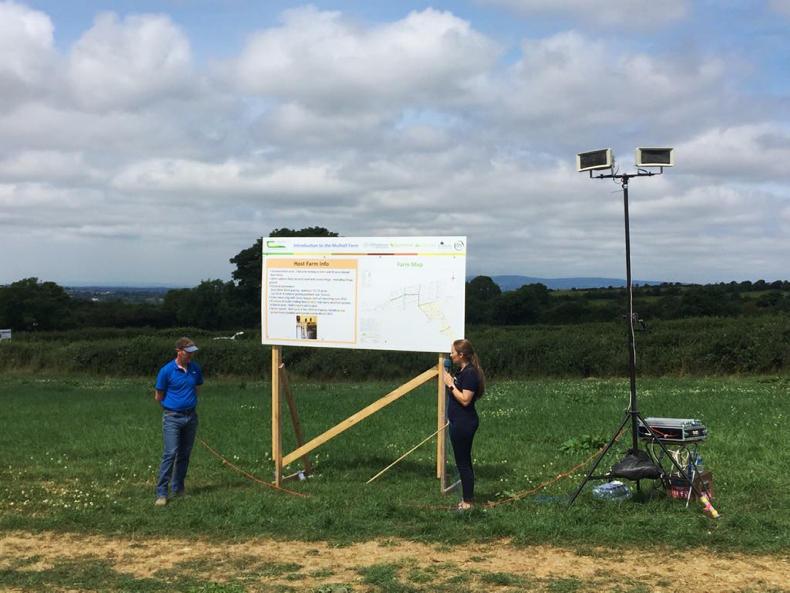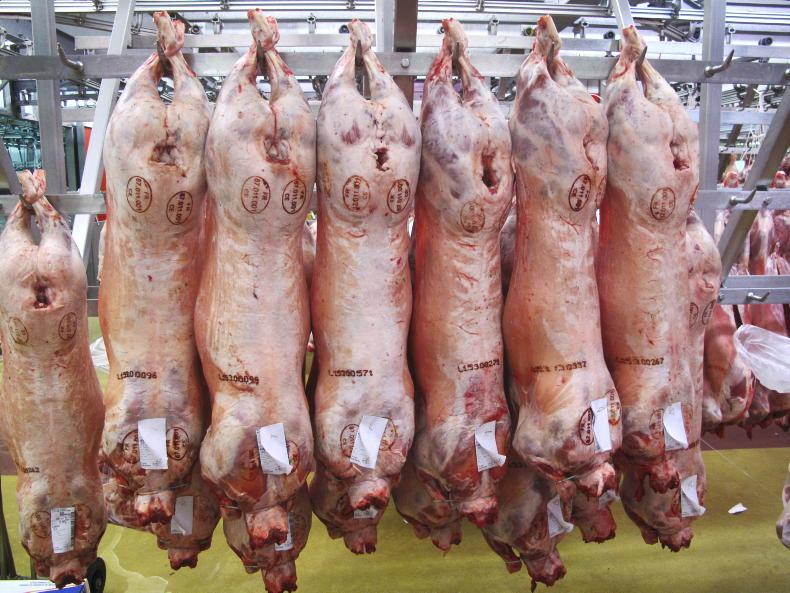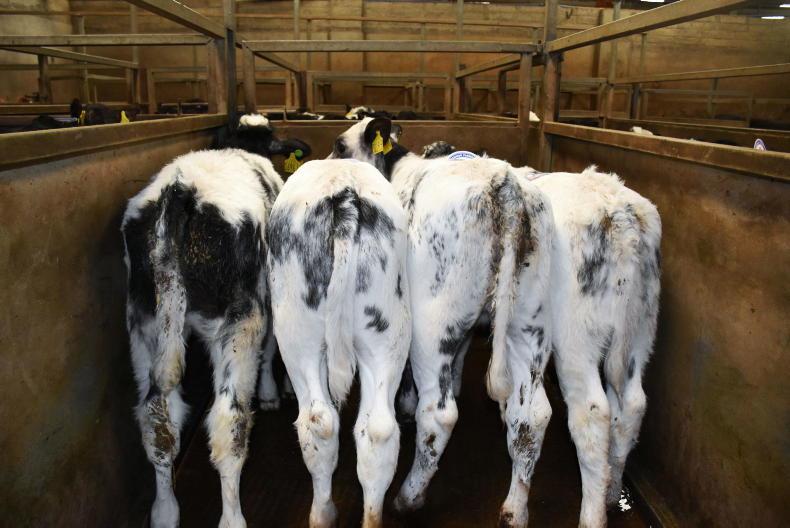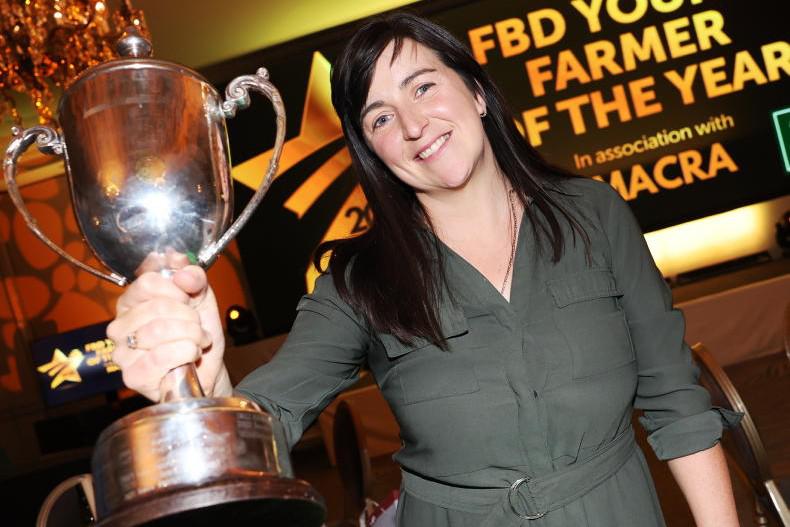John farms 130 acres of grassland with an additional 50 acres rented from his parents. He runs a dairy store-to-beef operation with some tillage.
For the last two years, John has been investing in a rotational grazing system. This has taken him from block grazing paddocks 8ha to 10ha in size to upping stocking rates on a rotational system with 1.2ha paddocks.
This has allowed him to treble his stocking rate from 0.64LU/ha to 1.83LU/ha and finish his cattle two months earlier.

Dry conditions have affected John's farm with ground beginning to crack.
He says the benefits from his changed system have been better grass quality, more silage taken off paddocks, easier management of stock and better liveweight gain in cattle.
In terms of disadvantages, he says the large number of paddocks can be an issue at silage and slurry spreading time. He puts much of this down to not making gates wide enough at the beginning.

John purchased his own umbilical spreading system for €45,000 (€16,000 was covered by TAMS) to spread slurry on his farm.

The farm runs over a large hill meaning spreading by tanker was not suitable and no contractor was willing to pump John's slurry.
“I would urge everyone to attend discussion groups and farm walks and always try to bring at least one thing home from them,” John said.
Where to start with soil fertility?
Mark Plunkett, soil specialist with Teagasc, said that after soil testing every farm’s priority should be lime. He said that lime spreading rates are about 70% to 80% of what was required for the country.
“Correcting soil pH means two free bags of CAN for everyone in the audience. Acidic soils lock up nitrogen and raising the pH will release the nutrients. At a cost of €20/t to €25/t spread, it is very cost-effective considering nitrogen costs €250/t.”

Mark Plunkett,soil specialist with Teagasc, said that correcting pH to above 6.5 can unlock other nutrients in the soil.
How does grass grow?
Patrick Gowing, an adviser in the Dairy Expansion Service, stressed how paddocks were a technology to get the best out of grass’s growing pattern. What takes three weeks to grow should take three days to graze, he said, and after that the plant should be given time to regrow.
“You get the first leaf, then the second, then the third. After that, the fist leaf will begin to die back as the next one grows. We aim to graze the plant at the three-leaf stage when the plant is at its peak potential.”

Patrick Gowing outlined how the ideal paddock size ratio was 2:1 in order to minimise walking distances for cattle.
Why reseeding?
Although reseeding is an expensive process at a cost of €750/ha, John’s adviser Peter Doolan said it was important that farms did not cut corners if they did decide to reseed.
He said reseeding can be a prime opportunity to tackle a weed infestation problem as well as maximise the growth potential of a block of ground. He marked seed bed preparation and post-sowing management as the two crucial parts of achieving a successful reseed.

This is the part of the reseeded field that has already been grazed. Cattle entered at a cover less than 1,000kg DM.

The dairy stores are currently grazing the middle part of the reseed. Grazing out paddocks after reseeding allows for maximum tillering.

The cattle are due to enter the third part of the reseed shortly. There are plans on the farm to graze what was meant to be second-cut silage as it is no longer growing.
Read more
Stabilisers working on Tipperary farm
Walsh family excels in Tipperary sunshine
John farms 130 acres of grassland with an additional 50 acres rented from his parents. He runs a dairy store-to-beef operation with some tillage.
For the last two years, John has been investing in a rotational grazing system. This has taken him from block grazing paddocks 8ha to 10ha in size to upping stocking rates on a rotational system with 1.2ha paddocks.
This has allowed him to treble his stocking rate from 0.64LU/ha to 1.83LU/ha and finish his cattle two months earlier.

Dry conditions have affected John's farm with ground beginning to crack.
He says the benefits from his changed system have been better grass quality, more silage taken off paddocks, easier management of stock and better liveweight gain in cattle.
In terms of disadvantages, he says the large number of paddocks can be an issue at silage and slurry spreading time. He puts much of this down to not making gates wide enough at the beginning.

John purchased his own umbilical spreading system for €45,000 (€16,000 was covered by TAMS) to spread slurry on his farm.

The farm runs over a large hill meaning spreading by tanker was not suitable and no contractor was willing to pump John's slurry.
“I would urge everyone to attend discussion groups and farm walks and always try to bring at least one thing home from them,” John said.
Where to start with soil fertility?
Mark Plunkett, soil specialist with Teagasc, said that after soil testing every farm’s priority should be lime. He said that lime spreading rates are about 70% to 80% of what was required for the country.
“Correcting soil pH means two free bags of CAN for everyone in the audience. Acidic soils lock up nitrogen and raising the pH will release the nutrients. At a cost of €20/t to €25/t spread, it is very cost-effective considering nitrogen costs €250/t.”

Mark Plunkett,soil specialist with Teagasc, said that correcting pH to above 6.5 can unlock other nutrients in the soil.
How does grass grow?
Patrick Gowing, an adviser in the Dairy Expansion Service, stressed how paddocks were a technology to get the best out of grass’s growing pattern. What takes three weeks to grow should take three days to graze, he said, and after that the plant should be given time to regrow.
“You get the first leaf, then the second, then the third. After that, the fist leaf will begin to die back as the next one grows. We aim to graze the plant at the three-leaf stage when the plant is at its peak potential.”

Patrick Gowing outlined how the ideal paddock size ratio was 2:1 in order to minimise walking distances for cattle.
Why reseeding?
Although reseeding is an expensive process at a cost of €750/ha, John’s adviser Peter Doolan said it was important that farms did not cut corners if they did decide to reseed.
He said reseeding can be a prime opportunity to tackle a weed infestation problem as well as maximise the growth potential of a block of ground. He marked seed bed preparation and post-sowing management as the two crucial parts of achieving a successful reseed.

This is the part of the reseeded field that has already been grazed. Cattle entered at a cover less than 1,000kg DM.

The dairy stores are currently grazing the middle part of the reseed. Grazing out paddocks after reseeding allows for maximum tillering.

The cattle are due to enter the third part of the reseed shortly. There are plans on the farm to graze what was meant to be second-cut silage as it is no longer growing.
Read more
Stabilisers working on Tipperary farm
Walsh family excels in Tipperary sunshine


























SHARING OPTIONS